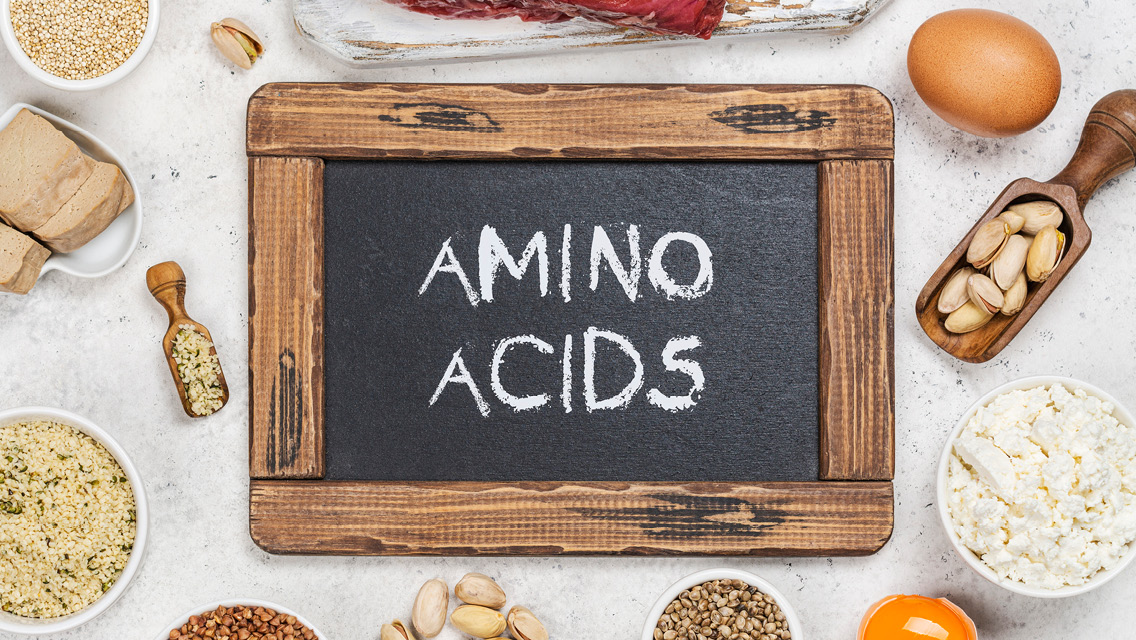Feeling a little low? You’re not alone. The World Health Organization says 121 million people currently suffer from depression. That means almost 10 percent of women and nearly 6 percent of men in any given year will feel depression’s common effects – sadness, a waning interest in daily activities and sagging energy.
“We’re facing a bad-mood epidemic,” says Julia Ross, MA, author of The Mood Cure: The 4-Step Program to Take Charge of Your Emotions – Today and executive director of Recovery Systems in Mill Valley, Calif., a clinic that treats mood problems using counseling, nutritional therapy and biochemical rebalancing. “It’s clear that our moods are deteriorating at unprecedented rates.”
It’s also clear that antidepressant drugs have become the first line of defense. According to a study in the Journal of the American Medical Association (Jan. 9, 2002), antidepressant drug use for treating outpatient depression increased from 37 percent in 1987 to 75 percent in 1997.
Antidepressants work for many people, at least in the short term, and if you’ve exhausted all the natural solutions without success, then pharmaceuticals could be the right choice, according to Ross. “But before you go down that road, it’s important to understand that drugs like antidepressants carry the risk of significant side effects – plus they don’t actually ‘fix’ the underlying problem.” she explains. “Antidepressants can only stimulate the mood-enhancing brain chemicals you already have, but most disorders stem from having inadequate levels of these chemicals to begin with. What you really need to do is rebuild the deficit.”
Ross and a growing number of other experts believe that nutrients called amino acids offer a way to build your levels of good-mood compounds. Aminos often also lift depression’s dark cloud even faster than drugs. Whereas the National Institute of Mental Health reports that the onset of action for antidepressants ranges from two to eight weeks, Ross says one week seems to be the upper time limit for relief with amino acids. In fact, she says that many people feel a lot better in just 24 hours.
Of course, neither amino acids nor antidepressants work for everyone, but a 1991 head-to-head comparison published in the medical journal Psychopathology found that the amino acid 5-hydroxytryptophan (5-HTP) actually outperformed the antidepressant Luvox in ratings of improvement for depression (66 percent versus 62 percent) and anxiety (58 percent versus 48 percent) following six weeks of treatment. Adds Ross: “At our clinic we’ve seen a 98 percent success rate using the targeted amino acids to treat mood disorders, and there are virtually no side effects when they’re used properly.”
In contrast, negative side effects from prescription mood-altering drugs are serious enough to convince some people that the benefits just aren’t worth it. Not everyone who takes antidepressants experiences all (or even any) negative effects, but the list of possible well-known problems is daunting. That list includes nausea, headaches, extreme fatigue, dizziness, weight gain, insomnia and diminished libido. Research presented in the British Journal of Psychiatry suggests that some types of antidepressants are even linked to suicidal thoughts and actions, and in 2004, the FDA recommended that antidepressant medications carry a warning label to that effect.
Not Just for Bodybuilders
You’ve probably heard of using amino acid supplements for improved protein assimilation and muscle growth. Bodybuilders and other strength athletes have been some of amino acids’ biggest fans since the 1970s and 1980s. But as naturopathic and conventionally trained doctors alike have discovered, amino acids do much more than build bulging biceps.
In a nutshell, amino acids (found in foods such as poultry, beef, fish, dairy and eggs) are the building blocks of proteins, which are the building blocks of almost everything solid in the human body. There are more than 50,000 forms of protein – all enzymes and most hormones, every cell and muscle, and every piece of tissue are made of protein, according to Robert Erdmann, PhD, author of The Amino Revolution: The Breakthrough Program That Will Change the Way You Feel.
Amino acids essentially run your brain, writes Eric Braverman, MD, director of the Place for Achieving Total Health in New York and author of The Healing Nutrients Within. In fact, in his book Braverman explains that the central nervous system is almost completely regulated by amino acids and their peptides (two to three aminos linked together). Aminos are the precursors to many neurotransmitters (chemical messengers in the nervous system) that control processes such as appetite, sleep, mental performance, pain response and, yes, even mood.
Mood Mechanics
Mood disorders are caused by imbalances in neurotransmitters, so understanding how these imbalances occur – and how to correct them – can be helpful in choosing your preferred solution. Like most physiological processes, mood regulation is somewhat complex, so it helps to have a top-line description of how it all works.
Nerve cells in the brain called neurons store neurotransmitters and release them in response to various electrical and biochemical signals. For mood control, the types of neurotransmitter chemicals released fall into one of two basic categories: excitatory (stimulating) or inhibitory (calming). Excitatory neurotransmitters include dopamine, norepinephrine and epinephrine (a.k.a. adrenaline), while serotonin and gamma-aminobutyric acid (GABA) exert an inhibitory effect.
If your brain receives a signal that it’s time to rev up, neurons release stimulating neurotransmitters. When the excitement has passed or if the level of stimulating substances gets too high, neurons release the calming neurotransmitters. This is a simplified description, but low levels of the stimulating neurotransmitters usually result in a lack of energy, motivation or focus. On the other hand, if your calming neurotransmitter tank is running low, you might feel anxious, irritable, obsessive, overly sensitive or impatient.
To fully appreciate the benefits of amino acids for mood regulation, it’s important to first know how mood drugs work. In his book, 5-HTP: The Natural Way to Overcome Depression, Obesity, and Insomnia, Michael Murray, ND, describes the three primary types of antidepressants on the market: tricyclics, monoamine oxidase (or MAO) inhibitors and selective serotonin reuptake inhibitors (or SSRIs). Tricyclics block the reuptake of two neurotransmitters: serotonin (calming) and norepinephrine (stimulating). This means tricyclics cause the existing levels of these neurotransmitters exert their effects longer, but there is no increase in the actual amount of neurotransmitters available. Because of their effects on norepinephrine, tricyclics have some of the more serious side effects, including dry mouth, nausea, rapid heart rate, constipation and fatigue.
The MAO inhibitors slow down the activity of monoamine oxidase, the enzyme that breaks down neurotransmitters, writes Murray. These drugs don’t increase the supply of neurotransmitters either: they just prevent what’s there from “dissolving.” But they also carry a risk of side effects, including dangerously high blood pressure, brain hemorrhage and abnormal heart rhythms.
Since the newer SSRIs affect only the reuptake of serotonin, they have fewer and less serious side effects than the tricyclics and MAO inhibitors, but they can still cause problems like nausea, fatigue, weight gain or a loss of sex drive. Moreover, they only temporarily relieve depression symptoms (by extending the time period that existing serotonin is active).
The key point to remember is this: Antidepressants affect mood by temporarily increasing the time in which neurotransmitters exert their effects. But if you naturally have low levels of neurotransmitters, then taking drugs is not going to change that. In contrast, amino acids actually go to the heart of the problem and normalize neurotransmitter levels. If you’re deficient, taking amino acids can give your body the raw materials it needs to make more.
As effective as aminos can be, though, they work only when you’ve selected the right one for your specific problem. “When people come to me complaining of bad moods, the first thing I do is find out exactly what their symptoms are,” says Robert Baker, PhD, program director of the Anxiety and Mood Disorders Program at the Ochsner Clinic Foundation in New Orleans. “You must accurately identify the problem before you decide which amino acid to try.”
In other words, what does “I’m in a bad mood” mean, exactly? Do you feel stressed, anxious, worried and unmotivated or are you just plain cranky? While there can be some crossover, mood problems owing to hyped-up anxiety are generally caused by different biochemical imbalances than those that result in depression. And different causes mean different solutions. (See “Mood-Boosting Aminos,” below, for a rundown on the effects of amino acids.)
Consulting with a professional is one way to pinpoint the source of your malaise. Self-evaluation is another. (In The Mood Cure and on her Web site, www.moodcure.com, Julia Ross offers a mood-type questionnaire that can help sort through symptoms and identify your target.) Whether you choose to visit a professional or figure it out on your own, the point is to identify the nature of the bad mood you’re in before you begin to take any remedies, even natural nutrients.
Is Amino Acid Therapy for You?
If you aren’t currently taking antidepressant drugs, you aren’t pregnant or breastfeeding and you don’t have any other medical conditions, board-certified internist Jacob Teitelbaum, MD, author of From Fatigued to Fantastic, says amino acid therapy is safe enough to experiment with on your own, as long as you do your homework and follow recommended guidelines.
There are factors, like sufficient levels of certain vitamins and minerals, that affect how well amino acids work, but experts agree that when compared to antidepressants, the concerns with aminos are minimal for otherwise healthy people.
“I tell my clients that amino acids are definitely worth a try,” says Baker. “Your body can usually work things out on its own if you give it the right tools. It’s better to try natural solutions first rather than taking in drug chemicals that your body has more trouble processing and getting rid of.”
Mood-Boosting Amino Acids
Here’s a summary of the most common mood-regulating amino acids. The nutrients listed here are free form and therefore easier to absorb, hypoallergenic and identical to those found in food. Always begin with the lowest dose and work up to the maximum dose listed, if needed. Do not begin amino acid therapy if you’re pregnant of lactating, and see your physician’s advice if you’re currently taking antidepressants or other mood-regulating medications, or if you have any medical conditions. Discontinue any amino acid that results in an adverse effect.
What: L-Tyrosine
- Why: To feel more upbeat, energized and alert. L-Tyrosine is a building block for excitatory neurotransmitters.
- How Much: One to three 500 mg caps before breakfast, at mid-morning, and one to two caps midafternoon.
- Concerns: If overdone, L-Tyronsine can lead to headaches, jitters, insomnia or raised blood pressure. Do not use with caffeine.
What: 5-HTP (5-hydroxy tryptophan, derived from tryptophan)
- Why: To feel more confident, cheerful and positive, and to relieve deficiency symptoms like anxiety, obsessiveness, irritability, sleeplessness and worry. It’s a precursor in serotonin production, a calming neurotransmitter.
- How Much: One to three mg tabs midafternoon and at bedtime.
- Concerns: Can cause mild nausea or mood and sleep problems. Don’t combine with SSRIs without physician supervision. Excessive amounts can result in the same effects in serotonin deficiency.
What: GABA (gamma-aminobutyric acid)
- Why: To fight stress and promote sleep and relaxation. GABA is a primary calming neurotransmitter.
- How Much: 100 to 500 mg one to three times daily at or just before high-stress times or at bedtime to promote sleep.
- Concerns: Excess amounts can make you feel too tired, rather than just relaxed.
This article originally appeared as “A Better Way to Improve Mood” in the December 2004 issue of Experience Life.




This Post Has 0 Comments